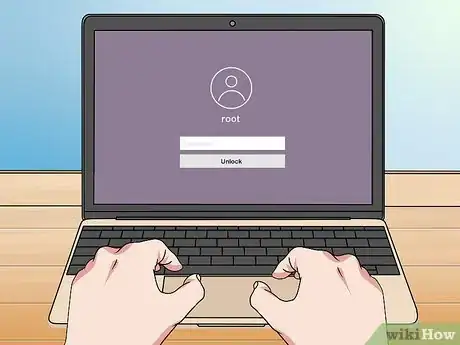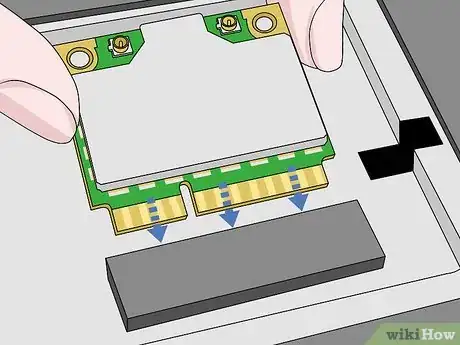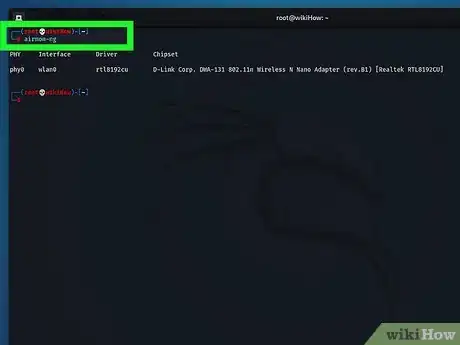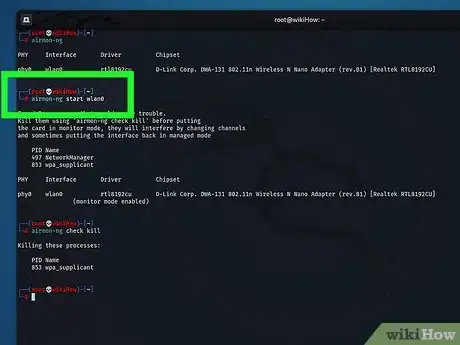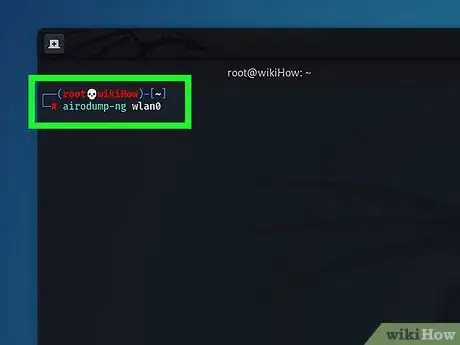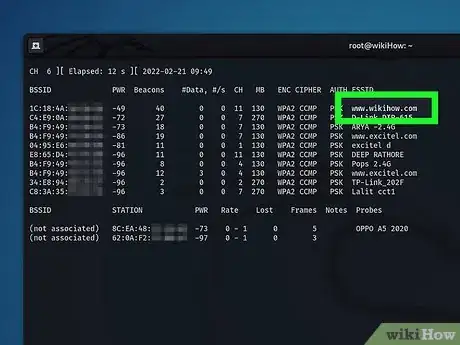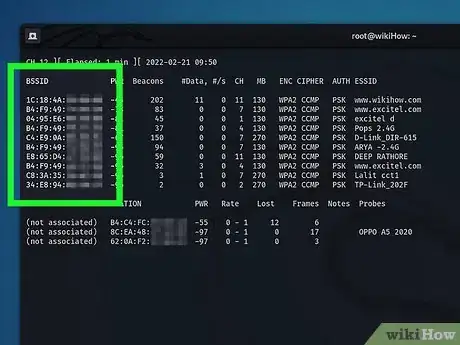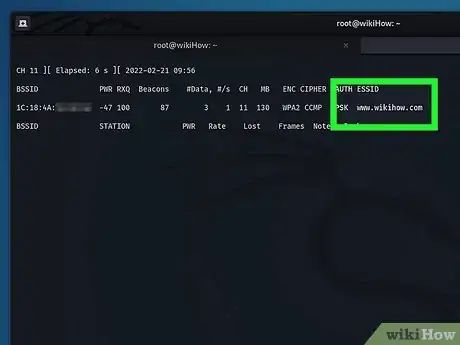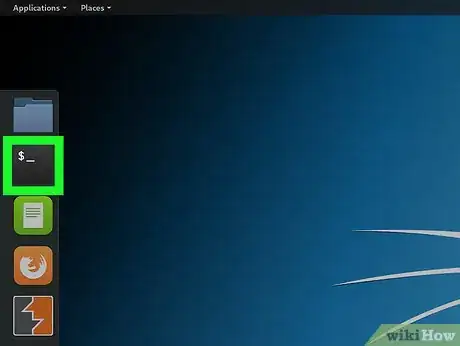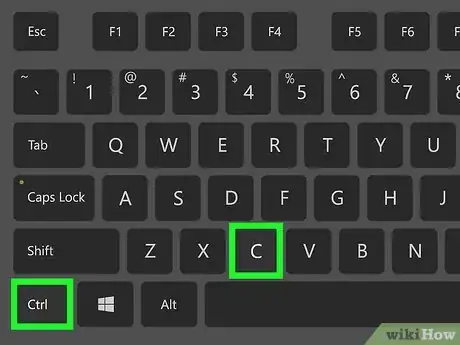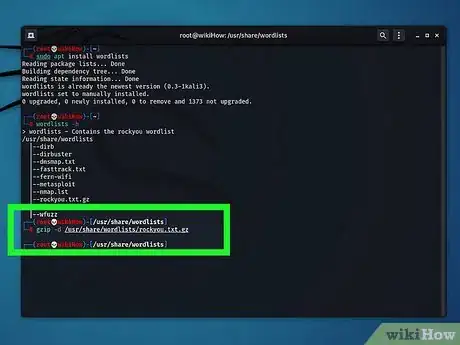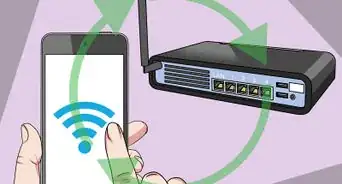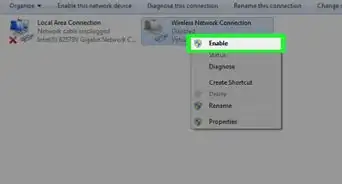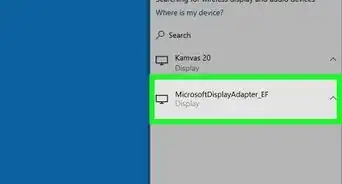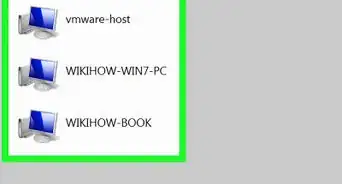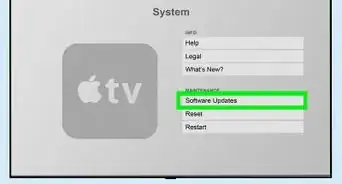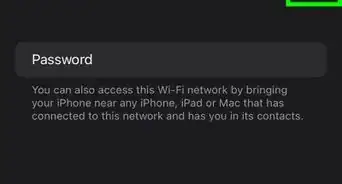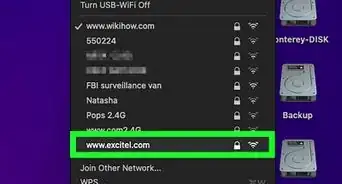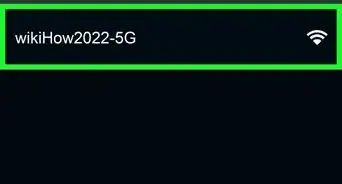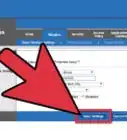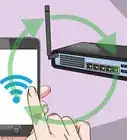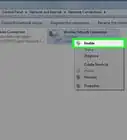wikiHow is a “wiki,” similar to Wikipedia, which means that many of our articles are co-written by multiple authors. To create this article, 26 people, some anonymous, worked to edit and improve it over time.
This article has been viewed 1,224,208 times.
Learn more...
Want to find out if your Wi-Fi network is easy to hack? As a Kali Linux user, you have hundreds of pre-installed security auditing and penetration testing tools at your disposal. These tools are intended for ethical hacking—finding and repairing weak spots in a network—and not for illegal purposes. To find out if a WPA/SPA PSK network is susceptible to a brute-force password attack, you can use a suite of tools called aircrack-ng to hack the key. We'll show you how!
Steps
Starting Monitor Mode
-
1Log into your Kali desktop as root. This logs you in to the desktop environment as the root user.
- If you haven't enabled root logins in Kali and are using KDE or GNOME, run sudo apt install kali-root-login at the prompt.[1] Once installed, you can set a root password by running sudo password (no username) and entering a new root password. At that point, you can log in to the desktop as root.
-
2Plug your Wi-Fi card (if needed). If you don't have a Wi-Fi card that allows monitoring (RFMON) or you're using Kali Linux in a virtual machine, you'll need to attach an external card that does.
- In most cases, simply attaching the card to your computer will be enough to set it up. Check the instructions for your Wi-Fi card to be sure.
- If you're not sure if your Wi-Fi card supports monitoring, it doesn't hurt to try these next few steps.
Advertisement -
3Disconnect from Wi-Fi. To successfully test a network, you'll want to make sure your computer is not actively connected to Wi-Fi—not even to the network you're testing.
-
4In a terminal window, run the airmon-ng command. This tool come with Kali Linux as a part of the aircrack-ng package, and will show you the names of the connected Wi-Fi interface(s). You'll want to take note of what you see under the "Interface" header for your card.
- If you don't see an interface name, your Wi-Fi card doesn't support monitoring.
-
5Run airmon-ng start wlan0 to start monitoring the network. If the name of your Wi-Fi interface isn't wlan0, replace that part of the command with the correct name. This gives you a new virtual interface name, which will usually be something like mon0, which you'll see next to "(monitor mode enabled)."
- If you see a message that says "Found processes that could cause trouble," run airmon-ng check kill to kill them.
-
6Run airodump-ng mon0 to view the results. Replace mon0 with the correct virtual interface name if that's not what you saw earlier. This displays a data table for all Wi-Fi routers in range.
-
7Find the router you want to hack. At the end of each string of text, you'll see a router name.
- Make sure the router is using WPA or WPA2 security. If you see "WPA" or "WPA2" in the "ENC" column, you can proceed.
-
8Find the BSSID and channel number of the router. Now you'll want to make note of the values of the "BSSID" and "CH" fields for the router you want to hack. These pieces of information are to the left of the network's name.
-
9Monitor the network for a handshake. A "handshake" occurs when an item connects to a network (e.g., when your computer connects to a router). You need to wait until a handshake occurs so you capture the data necessary to crack the password. To start monitoring, run the following command:
- airodump-ng -c number --bssid xx:xx:xx:xx:xx:xx -w /root/Desktop/ mon0
- Replace the word number with the channel number you saw, and the xx:xx:xx:xx:xx:xx with the BSSID.
- As long as this command stays running, you'll be monitoring for all connections and new handshakes.
Logging and Cracking the Password
-
1Understand what a deauth attack does. A deauth attack sends deauthentication packets to the router you're trying to break into, causing uses to disconnect and requiring them to log back in. When a user logs back in, you will be provided with a handshake. If you don't do a deauth attack, you might have to wait around for a long time for a handshake to complete—you'll need that handshake to crack the password.
- If you already see a line with the tag "WPA handshake:" followed by a MAC address in the output of the airodump-ng command, skip to Step 5—you have what you need to crack the password and don't need to send deauth packets.
- Remember—use these tools for ethical purposes only.
-
2Wait for something to connect to the network. Once you see two BSSID addresses appear next to each other—one labeled BSSID (the Wi-Fi router) and the other labeled STATION (the computer or other device)—this this means a client is connected. To force them into a handshake, you'll now send them deauth packets that kill their connection.
-
3Open a new terminal. Make sure airodump-ng is still running in original terminal window, and drag it to another place on your desktop so both terminals are visible.
-
4Send the deauth packets. Run this command, replacing STATION BSSID with the BSSID of the client that connected to the network, and NETWORK BSSID with the router's BSSID: aireplay-ng -0 2 -a STATION BSSID -c NETWORK BSSID mon0.
- This command will send 2 deauth packets to disconnect the client from the network.[2] Don't try to send more than this—sending too many packets could prevent the client from reconnecting and generating the handshake.
- As long as you're close enough to the target client, they'll be disconnected from the router and forced to reconnect with a handshake. If this doesn't work, move closer to the client.
- As soon as the client reconnects, all of the information you'll need to crack the password will be available.
-
5In the original terminal window, press Control+C to quit airodump-ng. This stops the dump and saves a file ending with .cap to your desktop.
-
6Decompress the rockyou.txt wordlist. To crack the password, you'll need a wordlist. Fortunately, since you're using Kali Linux, you have several already in /usr/share/wordlists.[3] The one we'll want to use is called rockyou.txt, but it's zipped up by default. To unzip it, run gzip -d /usr/share/wordlists/rockyou.txt.gz.
- You won't be able to crack the password if it's not in the wordlist. You can always try one of the other wordlists if rockyou.txt doesn't crack the password.
-
7Run the command to crack the password. You'll use a tool called aircrack-ng, which come with Kali Linux, to do so. The command is aircrack-ng -a2 -b NETWORK BSSID -w /usr/share/wordlists/rockyou.txt /root/Desktop/*.cap. Replace NETWORK BSSID with the BSSID for the router.
-
8Look for "KEY FOUND!" in the terminal window. When you see a "KEY FOUND!" heading appear, aircrack-ng has found the password, which will appear in plain text.
Community Q&A
-
QuestionWhat is a word list, and how do I find one?
 Community AnswerA word list is a file with passwords in it. RockYou is a good one.
Community AnswerA word list is a file with passwords in it. RockYou is a good one. -
QuestionWhere can I download Kali Linux?
 Community AnswerGo to kali.org. At the top of the page, there is a Download tab. Once you open that, it will pull up the list of current downloads.
Community AnswerGo to kali.org. At the top of the page, there is a Download tab. Once you open that, it will pull up the list of current downloads. -
QuestionWho created Kali Linux?
 Community AnswerKali Linux is a Debian-derived Linux distribution designed for digital forensics and penetration testing. It is maintained and funded by Offensive Security Ltd. Mati Aharoni, Devon Kearns and Raphaël Hertzog are the core developers.
Community AnswerKali Linux is a Debian-derived Linux distribution designed for digital forensics and penetration testing. It is maintained and funded by Offensive Security Ltd. Mati Aharoni, Devon Kearns and Raphaël Hertzog are the core developers.
Warnings
- Sending more than two death packets may cause your target computer to crash, thus arousing suspicion.⧼thumbs_response⧽
- Hacking into anyone’s Wi-Fi without permission is illegal in most countries. Only perform the above steps on a network that either belongs to you or for which you have explicit consent to test.⧼thumbs_response⧽
References
About This Article
Log into your Kali Linux computer as root and plug a Wi-Fi card into your computer. Next, open your computer’s terminal. From here, you’ll be able to begin monitoring the network and listen to nearby routers. When you find the router you want to hack, watch it for a handshake, which will give you the code to enter the network. To learn how to use Aircrack-Ng for Non-GPU computers, keep reading!
